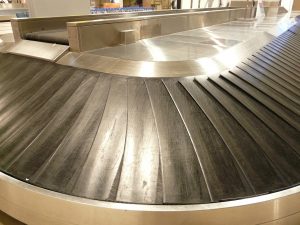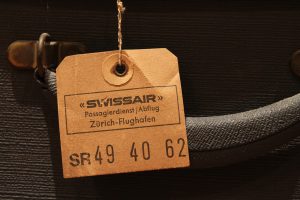
Although lost luggage is a rare occurrence; less than 0.05 percent of checked bags are actually lost; when it happens to you, it is inconvenient to say the least. As most packing pros know, a good rule of thumb is to put valuable and important items, such as camera, passport, tickets, and prescription medication in your carry-on bag. It is also a good idea to put a change of clothes in your carry-on bag too, so you are prepared in the event of lost luggage or minor delay. Although rules vary by airline, you are also generally allowed to carry onto the plane with you what airlines refer to as a “personal item,” such as a small backpack, camera, or laptop, for example.

Not surprisingly, most luggage is delayed or lost when you have to make a connection somewhere; especially one that is short on time. Request extra time for your connection if you feel it necessary; a 40-minute connection time at a big airport is asking for trouble, even though the airline assures you it is enough time.
Try to take a nonstop flight if you possibly can, or if you have to change planes, try to catch a flight earlier in the day so you have backup flight options for both you and your bags. An early morning flight is statistically less likely to be delayed or canceled, as delays tend to build up throughout the day. Ask your airline representative for the Department of Transportation on-time statistics for your particular flight, which they are required to provide if requested.
Be sure to check in for your flight on time to minimize the risk of your bag being mishandled. Check-in times vary according to your destination, the airline you are traveling on, and even the airport you are flying out of. You should always check with your airline or travel agent for the current guidelines.
If you check in late for your flight, you and your luggage may undergo what the airlines call “voluntary separation,” in which you agree to have your luggage travel on a separate flight from yourself. Try to make sure your bag is actually checked through to the correct destination. That oh-so mysterious three-letter airport code that appears on the luggage tag attached to your bag is all-important. For example, if you are flying to Salt Lake City, or SLC, and the agent tags your bag to SCL, it will end up in Santiago, Chile. Adios, bag!
It may comfort you to learn that most missing luggage is not actually lost, just delayed. If you are flying somewhere where there are flights every hour or so, your delayed bag may well be on the next flight. If so, you generally have the option of having it delivered to you. This can take several hours however, as the delivery company employed by the airline is responsible for delivering delayed bags for several different airlines. You can also go in to the airport in person to pick up your bag, in which case you should make sure that you have a photo ID.
If your missing luggage does not reach your destination with you within a certain time, you may be entitled to compensation. This depends on the extent of the delay; most airlines will start to compensate you after 24 hours. They may only compensate you for essentials such as an immediate change of clothes. It also depends on whether you are at home or somewhere else. If you are at home without your luggage, the airline’s perspective is that you dont need as much compensation. Before you travel, you can purchase extra coverage for lost or missing luggage; although unless you have something of particular monetary or sentimental value, it probably isn’t worth the extra cost.
If you need to make purchases because you need items that were in your lost luggage, be sure to keep the receipts so you can be reimbursed. If your lost luggage is never found, you are entitled to financial compensation up to the value of the goods inside. In this case the airline will probably send you forms to fill out, specifying the contents and value of your luggage. You are also entitled to receive compensation for damaged bags although it generally doesn’t cover everyday wear and tear of your luggage. If you believe the airline has damaged your bag, you generally need to report it in person along with the bag, rather than by phone. You are not entitled to compensation for loss or damage to your carry on bag or any items in them.
If your luggage does not appear on the carousel at your destination, immediately report the loss in person to your airline. You can report it at either the main desk or preferably at their baggage service office, usually located somewhere near baggage reclaim. Some smaller airlines will have their baggage services at the airport handled by larger airlines or by an independent baggage company. Try to report the loss of your bag as soon as possible; the sooner the airline begins tracking your missing luggage, the sooner you may be reunited. You always report the loss of your bag to the last airline you flew on. If you have a series of connecting flights on different airlines, speak to the airline you just arrived on; even if you suspect the loss occurred elsewhere on your journey.

What if your missing luggage is never found? After about 90 days the airline will declare your luggage officially lost and compensate you accordingly, if they have not already done so. If you are never reunited with your luggage, there is a reasonable chance it may end up in one of the unclaimed baggage locations. The most notable is in Scottsdale, Alabama. This is the home of the huge Unclaimed Baggage Center, a sort of vast luggage warehouse consignment store whose stock consists entirely of things people left on planes or bags and contents that were lost or never claimed. The store was found in 1970 as a part-time business, now it covers an entire city block and is a full time venture. Its hard to believe that people can leave musical instruments, computers, expensive jewelry, and false limbs on the plane; but you can find them all in here.

